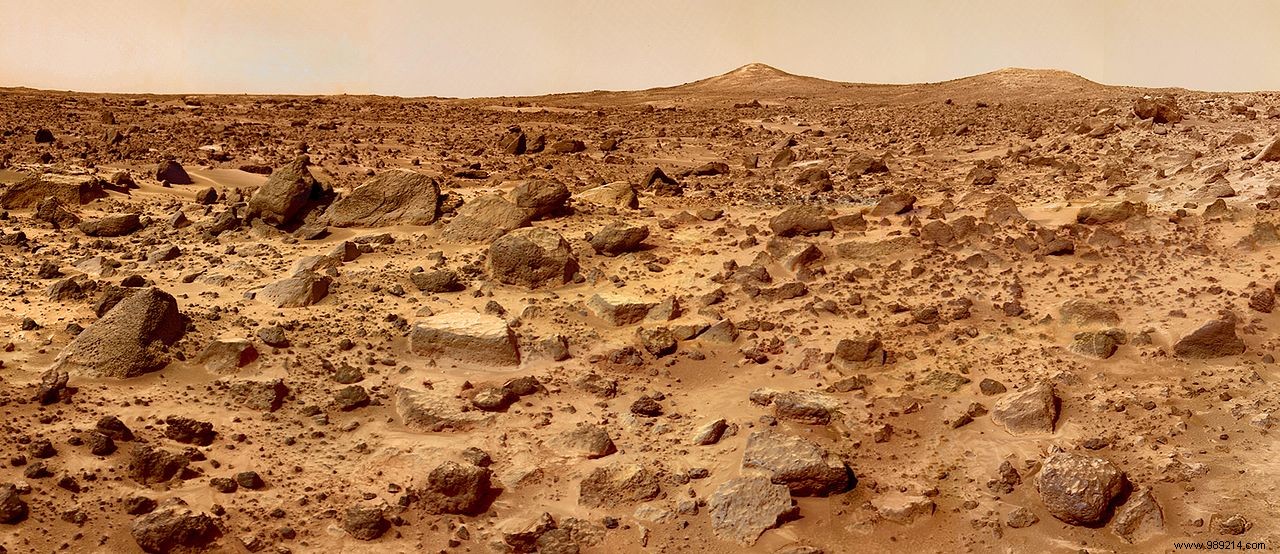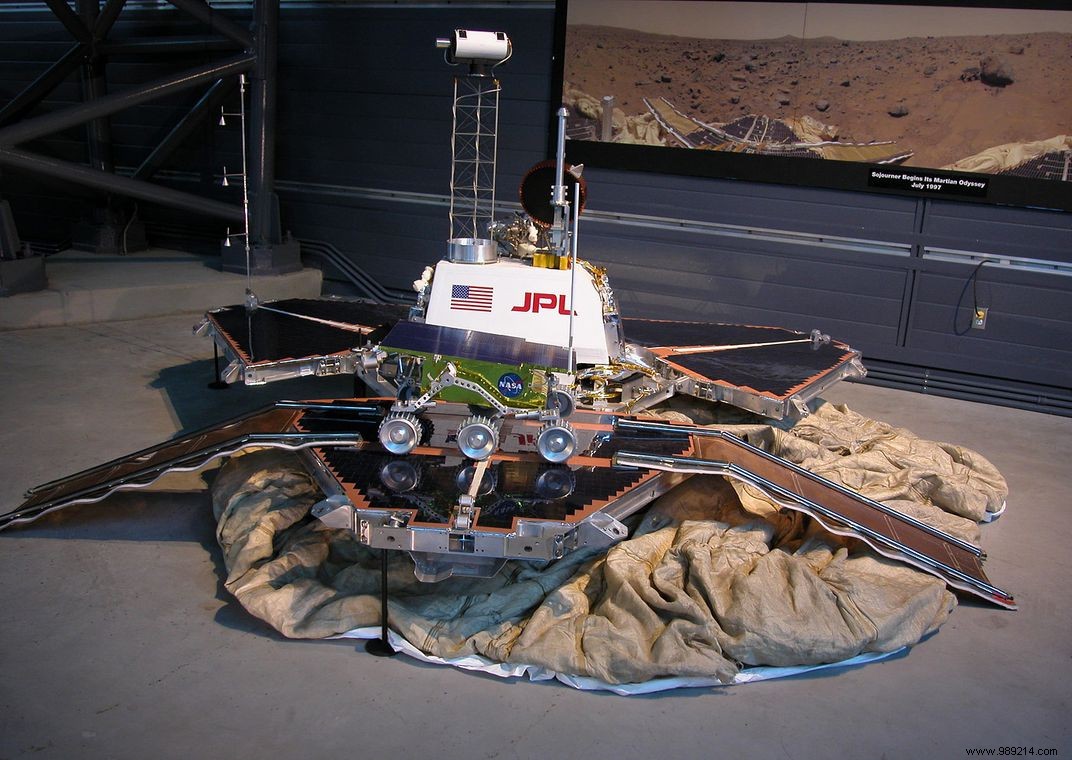Mars Pathfinder is a NASA mission launched in 1996. Unlike previous projects, the lander was also equipped with a rover called Sojourner. At the time, this was a first that received a lot of attention.
Perseverance's long journey is coming to an end. Launched on July 30, 2020, the rover is expected to land inside Jezero Crater this Thursday, February 18. If successful, it will be NASA's fifth rover to land on Mars, following Sojourner (1997), twin rovers Spirit and Opportunity (2004) and Curiosity (2012). It is the first that interests us today.
The small Sojourner rover was released on the red planet as part of the Pathfinder mission in 1997. NASA had already landed on Mars before with its two Viking landers in 1976. However, as their name suggests, they were "only" landers. In other words, these two machines remained static. In 1997, Sojourner was therefore the very first terrestrial vehicle to move on another planet . And at the time, it made (a lot) of noise.
The photos sent back by the rover, operated by the Jet Propulsion Laboratory in collaboration with NASA, indeed quickly caught the attention of the public. In one day, Pathfinder sites set a record with 47 million visits , which is still very impressive by today's standards. A demand that a still nascent World Wide Web simply could not fill.
"Pathfinder broke the internet “, recalls Jim Zimbelman, geologist emeritus at the Smithsonian’s Center for Earth and Planetary Studies. “There were so many photo upload requests that JPL was not prepared to handle them “.
For comparison, the 47 million views hits recorded on July 8 (the day of landing) were more than double the hits recorded the previous year on any day of the 1996 Olympic Games in Atlanta. Eventually, NASA and JPL set up about 20 "sister" sites to try to meet public demand and curiosity. In total, Pathfinder websites had 565 million visits worldwide between July 1 and August 4, 1997.
Public interest had started to mount the previous year, when scientists announced the discovery of a Martian meteorite in Antarctica that contained signs of possible extraterrestrial life . NASA, which was preparing Pathfinder for a later launch, finally decided to advance the mission which lifted off for the Red Planet in December 1996.

This mission was also unusual for another reason. At the time, NASA and JPL feared that Pathfinder and Sojourner would not survive traversing the Martian atmosphere using only parachutes and retrorockets. Additionally, the researchers were concerned that the heat from the engines would "bake" the surface, ultimately preventing the collection of clean samples for analysis. So instead, they came up with a different solution:an airbag system .
Concretely, the Pathfinder mission relied on a combination of four descent methods. First, a heat shield was used when it entered the atmosphere of Mars. parachutes , then retrofuses were deployed to slow the ship down. Then the lander and its rover, rolled up in huge air cushions , were released about twenty meters above the ground. Pathfinder then bounced fifteen to twenty times on the surface, before coming to rest and opening like petals of a flower, finally delivering the Sojourner rover to the surface of Mars.
“This was the first use of this type of landing, airbag assisted landing “, explains Matt Shindell, curator of space history at the Smithsonian museum. “They used it on later missions, but 1997 was the first time they tried this particular engineering solution “.

The goal of Pathfinder was to prove the viability of missions "quick and cheap". It only cost $150 million and was developed in less than three years. While there, the rover was used to study the surface of Mars, including rock geochemistry, surface magnetic properties, and the structure of the planet's atmosphere.
The rover sent back a treasure trove of information, collecting no less 1.2 gigabytes of data and taking approximately 10,000 photos of the Martian surface. Designed to last just one month, the solar-powered rover still lasted 70 Martian sols, or 85 Earth days . It sent its last transmission back to Earth on September 27, 1997 .